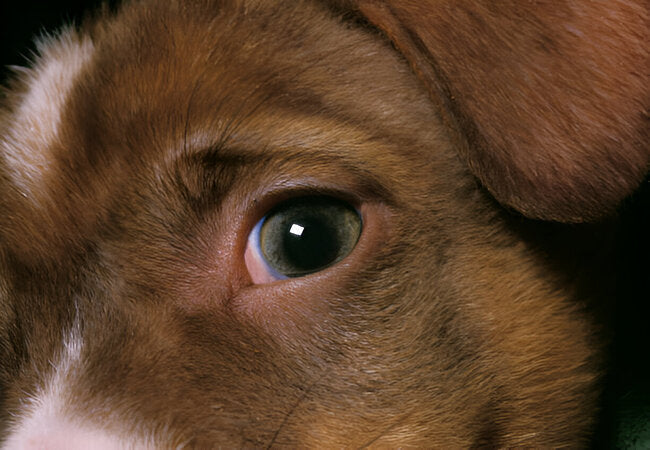2025 Vet Insight: The Evolution of Puppy‑Dog Eyes 🐶👀

In this article
2025 Vet Insight: The Evolution of Puppy‑Dog Eyes 🐶👀
By Dr. Duncan Houston BVSc
Hello! I’m Dr Duncan Houston BVSc, veterinarian and founder of Ask A Vet. Chances are, your heart melts when your pup gives you that soulful, wide-eyed look. It turns out those “puppy‑dog eyes” aren’t accidental—they’re a remarkable evolutionary trait. In this extensive 2025 insight, we'll explore how dogs developed facial muscles, infant‑like features, and communicative expressions to captivate humans, strengthen bonds, and call out for attention. We'll also discuss what it means for you, your training, and your relationship.
1. What Are "Puppy‑Dog Eyes"?
This look involves raised inner brows, widened eyes, and a subtly sad expression—an irresistible facial cue that can feel like a silent plea. But there's more behind those eyes than cuteness.
2. Evolutionary Changes: From Wolves to Dogs
Research shows dogs—unlike wolves—developed extra musculature, especially the levator anguli oculi medialis (LAOM), enabling that expressive brow raise.
As NOVA’s summary explains, "canines evolved puppy‑dog eyes to woo human companions"—an adaptation not seen in wolves.
3. Anatomy Meets Domestication
The anatomical study compared dogs to wolves and found that dogs have a specialized muscle allowing them to raise inner brows, making their eyes appear bigger—triggering nurturing reactions in humans.
4. Puppy Eyes: Neoteny & Baby Schema
Neoteny—retaining juvenile traits into adulthood—is key here. Features like large eyes, rounded faces, and floppy ears align with “baby schema,” a psychological driver causing humans to feel care and affection.
This isn’t just visual: puppy‑dog eyes mimic human infant expressions—wide and pleading—which may instinctively trigger our protective impulses.
5. Did Coyotes or Wild Dogs Evolve Similar Traits?
Surprisingly, new research shows coyotes and African wild dogs also have the same muscle. This suggests that expressive brow capability is a shared canid trait—not unique to domestication.
Nevertheless, dogs uniquely use this trait in human‑dog bonding contexts.
6. How Puppy Eyes Affect You
When your dog gives you that eyes‑wide‑open glare, your oxytocin (the "cuddle hormone") spikes—just like when bonding with a baby. It's a powerful bonding tool, often subconsciously used by your dog to connect and receive reassurance.
University of Portsmouth sums it well: this facial cue evolved “to better communicate with humans,” underpinning the remarkable relationship we share.
7. Behavior Meets Expression
- Communication: Dogs learn early that human attention, food, or help follow eye contact—especially the puppy‑dog look.
- Adaptive use: Dogs intensify this expression when people are watching—or when they want something—showing how sophisticated their social communication has become.
- Oxytocin loop: That eye contact triggers oxytocin release in both dog and owner—strengthening bond and trust.
8. Training & Bonding with Puppy Eyes
Use this tool to your benefit—build positive habits by engaging gentle eye contact during training, rewarding your pup’s gaze as a sign of attention and focus.
- Teach “look” or “watch me” while holding a treat—rewarding eye contact helps redirect attention from distractions.
- Practice the 5‑minute oxytocin game: present a sealed container, wait for eye contact, reward—this deepens your connection.
- Stay aware: don't inadvertently over-reward pleading eyes when it’s for treats at every glance—otherwise they learn to ask constantly.
9. When Puppy Eyes Signal Stress
While often cute, repeated sad-look glances may signal discomfort or anxiety—especially when combined with lowered head, tense ears, or yawning. Be mindful of context; sometimes they seek comfort more than attention.
10. FAQs on Puppy‑Dog Eyes ❓
- Q: Are those eyes manipulation?
- A: Not rude manipulation—just social communication rooted in evolution. Dogs use it because humans respond empathetically.
- Q: Do all dogs do this?
- Most breeds do, though some facial conformations emphasize it more. Coyotes and wild canids have the muscle, but dogs frequently use it during human interactions.
- Q: When should I reinforce eye contact?
- For calm focus during training or cues. Avoid constantly rewarding it outside those times to prevent opportunistic “puppy‑dog eyes.”
- Q: Can this trait indicate health issues?
- Solely expressive eyes are not a healthy sign. But if your dog also shows physical discomfort or weird posture, get them checked.
11. Ask A Vet Tips & Support 🛠️
With the Ask A Vet app, you get:
- 📹 Guidance on interpreting eye contact and stress cues in your pup
- 🧠 Training plans incorporating eye‑cue teaching
- 💞 Tips on using oxytocin‑strengthening exercises, like the container game
- 👀 Help spotting when puppy eyes may reflect discomfort, not affection
🩺 Final Vet Reflection
Those expressive, soulful puppy eyes you adore are more than chance cuteness—they're evolution’s gift to foster trust, empathy, and bonding between dogs and humans. By understanding their origin and meaning, you strengthen your relationship while responding thoughtfully. Cherish that gaze—but know when it’s asking for play, praise, or peace. And if you ever sense it’s more than a look, Ask A Vet is here to help. 🐾❤️






